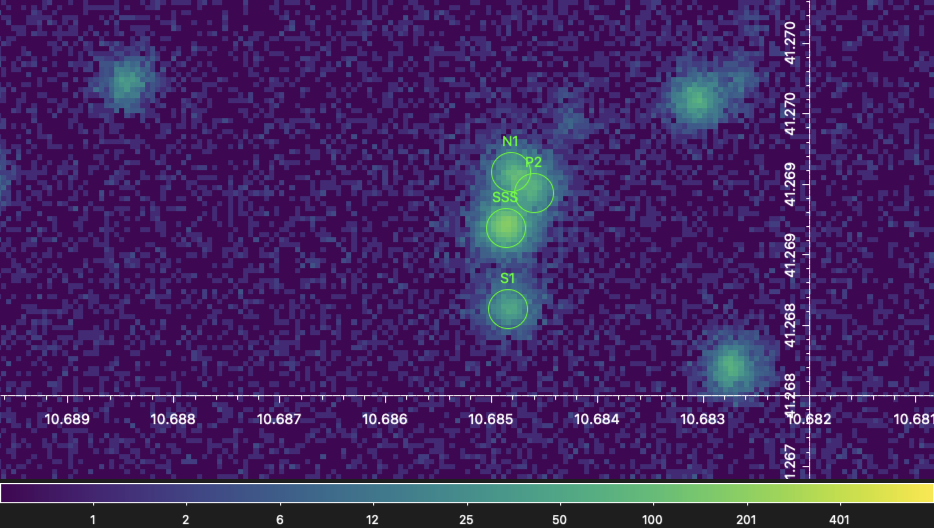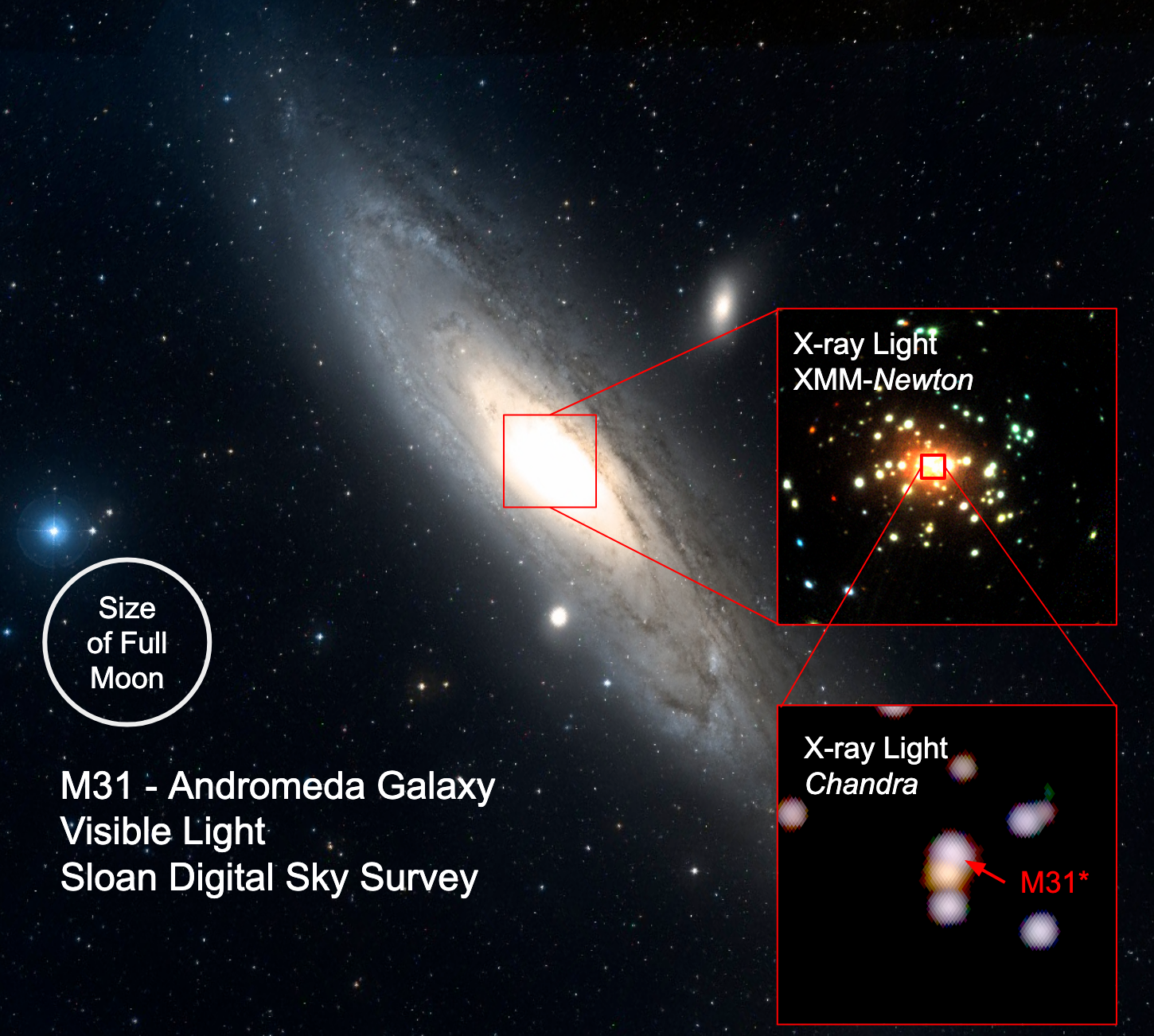
Using NASA’s Chandra X-ray Observatory, MSU physicist Stephen DiKerby captured a rare cosmic light show coming from the Andromeda galaxy. “I had a chill, because I realized I was looking at the X-rays from a supermassive black hole flicker on and off,” he said.
With data spanning 15 years, DiKerby and his collaborators pieced together a record of X-ray light emitted from the black hole M31*. Chandra’s precision allowed this activity to be isolated from other X-ray sources crowded around Andromeda’s core—work DiKerby likens to measuring the intensity of four flickering candles at the far end of a football stadium.
The research provides insight into the unique relationship between a galaxy and its black hole. This is critical to understanding how the universe developed over the past 14 billion years.
